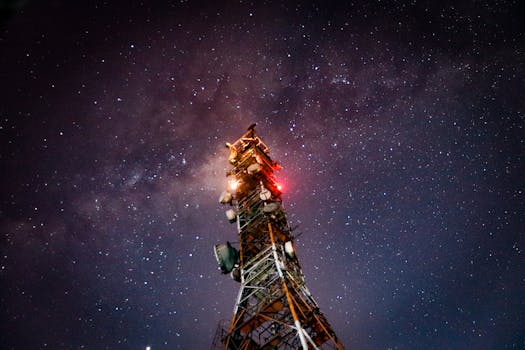
Starlink: Revolutionizing Global Internet Connectivity with Satellite Technology
Starlink is a satellite constellation developed by SpaceX, a private aerospace manufacturer and space transport services company founded by Elon Musk. The project aims to provide high-speed, low-latency internet connectivity worldwide, bridging the digital divide and transforming the way we communicate. With its innovative technology and ambitious goals, Starlink is poised to revolutionize the global internet landscape.
The concept of Starlink was first announced in 2015, with the goal of creating a network of low-Earth orbit (LEO) satellites that would provide internet connectivity to underserved and remote areas around the world. Since then, SpaceX has made significant progress in developing the technology and launching the satellites into orbit. As of 2022, over 3,000 Starlink satellites have been launched, with many more planned for the future.
The Starlink system consists of a constellation of small, low-Earth orbit satellites, each weighing approximately 573 pounds (260 kg). The satellites are equipped with advanced technology, including Hall effect thrusters, GPS, and communication equipment. They are designed to operate in a sun-synchronous orbit, which allows them to maintain a consistent altitude and provide continuous coverage to specific regions.
One of the key benefits of Starlink is its ability to provide high-speed internet connectivity to remote and underserved areas. Traditional fiber-optic and cable-based internet infrastructure can be expensive and difficult to deploy in these areas, leaving many communities without access to reliable and fast internet. Starlink’s satellite-based technology allows it to bypass these limitations, providing internet connectivity to anyone with a clear view of the sky.
In addition to its potential to bridge the digital divide, Starlink also has the potential to transform the way we communicate. With its low-latency technology, Starlink enables fast and seamless communication, making it ideal for applications such as online gaming, video conferencing, and remote work. The technology also has the potential to enable new use cases, such as autonomous vehicles, smart cities, and IoT devices.
Despite its many benefits, Starlink also faces several challenges and controversies. One of the main concerns is the potential for space debris and the impact on the environment. With thousands of satellites in orbit, there is a risk of collisions and the creation of space debris, which can harm other satellites and spacecraft. Additionally, the launch of so many satellites has raised concerns about the impact on the night sky and the visibility of stars.
Another challenge facing Starlink is the need for regulatory approval and compliance with international laws and regulations. The project has faced scrutiny from regulators and lawmakers, who are concerned about the potential impact on the environment, national security, and the competitive landscape of the telecommunications industry. SpaceX has had to navigate complex regulatory frameworks and obtain approvals from multiple countries to launch and operate its satellites.
In conclusion, Starlink is a revolutionary technology that has the potential to transform the global internet landscape. With its innovative satellite-based technology and ambitious goals, Starlink is poised to provide high-speed, low-latency internet connectivity to underserved and remote areas around the world. While the project faces several challenges and controversies, its potential benefits and impact on the way we communicate make it an exciting and important development in the world of technology.
